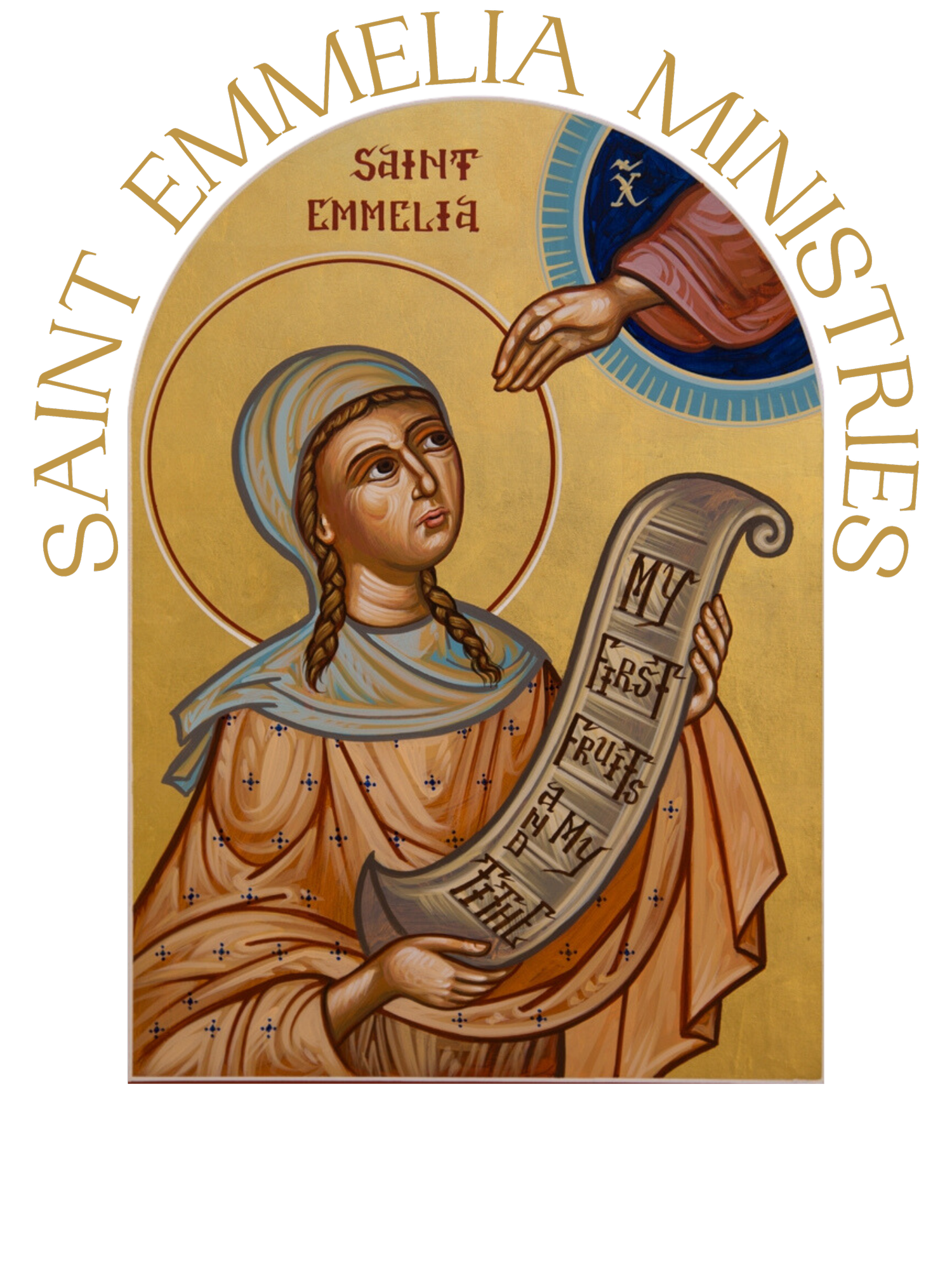Saint Emmelia
Commemorated on January 1 and May 30
The holy and righteous Emilia (also Emily or Emmelia), is the mother of Saint Basil the Great and several other children who are saints of the Church. Churches of the Russian tradition keep her feast on January 3, along with her son Basil. Greek churches keep her feast on May 30, along with her husband Saint Basil the Elder and her mother-in-law, Saint Macrina the Elder.
There are very few descriptions of Saint Emilia’s life. She was the daughter of a martyr and the daughter-in-law of Macrina the Elder. Along with her husband, Basil the Elder, she gave birth to ten children. She instilled the Orthodox faith in her children, teaching them to pray and devote their lives to the service of the Church. As a result of her zealous yet maternal instruction of her children, five of them are commemorated as saints on the Church calendar: Sts. Macrina, Basil, Peter of Sebaste, Gregory of Nyssa, and Theosebia, a deaconess. Therefore, Saint Emilia is often called “the mother of saints.”
When her son, Naucratius, suddenly died at the age of twenty-seven, she was consoled by her eldest daughter, Macrina. Macrina reminded her that it was not befitting to a Christian to “mourn as those who have no hope” and inspired her to hope courageously in the resurrection vouchsafed to us by the Pascha of the Lord.
After her children left home, St. Emilia was persuaded by Macrina to forsake the world. Together they founded a monastery for women. Emilia divided the family property among her children. Retaining only some meager possessions, she and Macrina withdrew to a secluded family property in Pontus, picturesquely located on the banks of the Iris River and not far from Saint Basil’s wilderness home. A number of liberated female slaves desired to join the pair, and a convent was formed. They lived under one roof and held everything in common: They ate, worked, and prayed together. They were so eager to advance in virtue that they regarded fasting as food and poverty as riches. The harmony of this model community of women was unspoiled by anger, jealousy, hatred, or pride. Indeed, as the Church sings of monastics, they lived like angels in the flesh.
Living in this manner for many years, Emilia reached old age. When an illness signaled her departure from this world, her son Peter came to her side. Together with Macrina, he tended to his mother in her last days. As the oldest and the youngest, Macrina and Peter held a special place in Emilia’s heart.
Before committing her soul to the Lord, she raised her voice to Heaven, saying, “To you, O Lord, I give the first fruits and the tithe of the fruit of my womb. The first fruit is my first-born daughter, and the tithe is this, my youngest son. Let these be for you a rightly acceptable sacrifice, and let your holiness descend upon them!” St. Emilia was buried as she had requested, beside her husband in the chapel at their estate in Annesi, where Naucratius had also been laid.
By permission of www.orthodoxwiki.org



